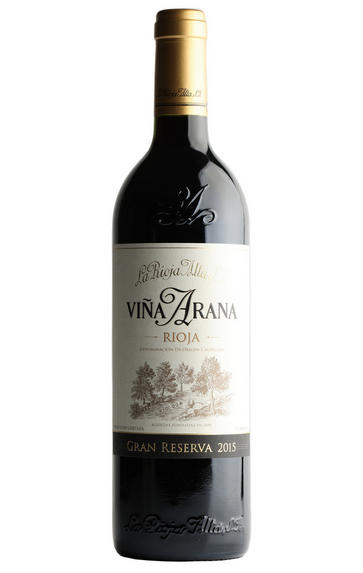
2015 Viña Arana, Gran Reserva, La Rioja Alta, Rioja, Spain
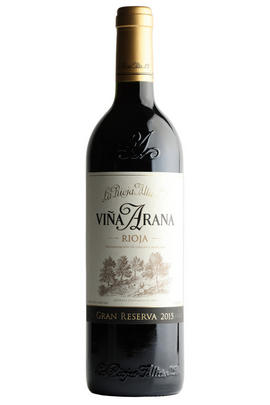
Critics reviews
Brilliant ruby. Energetic, spice- and smoke-accented black raspberry and candied cherry aromas are complemented by suggestions of rose oil, coconut and cured tobacco. Youthfully chewy and focused on entry, offering concentrated red and dark berry, cherry cola and candied licorice flavors that deepen steadily with air. Floral pastille and oak spice notes linger on the impressively long, smoke-tinged finish, which shows excellent clarity and polished tannins.
Drink 2024 - 2034
Josh Raynolds, vinous.com (Apr 2021)
The 2015 Viña Arana Gran Reserva, which was a Reserva until 2011, wants to showcase a new Gran Reserva style that combines freshness and joy with intensity, sophistication and aging potential through a blend of Tempranillo from Rodezno with 5% Graciano from Fuenmayor. The grapes were put through optical sorting and fermented in stainless steel for 19 days, and the wine matured in American oak barrels for three years with rackings every six months. This is the classical Haro style of Rioja Claret. They found that some special vintages of this wine behaved like a Gran Reserva, with a style that was closer to their 904. So, they wanted to make this consistent from vintage to vintage, a new a style of Gran Reserva, easier to understand than the 904 or 890. From 2012, the wine changes and they replaced the Mazuelo that was used in the past with Graciano, which they think is a grape very apt for Gran Reserva wines. I saw the wine with the 2015 vintage, a more developed nose with tertiary notes and some funkiness. They don't want this to be the small brother of 904. It's the entry level for Gran Reserva wines, for a younger generation; it's fresher and less complex but with good aging potential. In a year when they don't produce 904, the grapes would go to Viña Arana. The palate reveals quite a lot of tannin and a dry finish. 80,000 bottles produced. It was bottled in December 2019.
Drink 2022 - 2028
Luis Gutiérrez, Wine Advocate (Jul 2022)
Aromas of dark plum, raspberry, mocha, mushroom, chocolate, mocha, coconut and cigar box. Full-bodied with ripe, fine tannins and bright acidity. Balanced and supple with a velvety texture. Coffee notes on the long, succulent finish. 95% tempranillo and 5% graciano. Drink or hold.
James Suckling, jamessuckling.com (Oct 2021)
Graciano helps our Gran Reservas to age, says Julio Sáenz of this blend with 94% Tempranillo. Still youthful, this is a classic expression of the perfumed, American oak-influenced La Rioja Alta style, with notes of coconut and sweet baking spices, fine tannins and refreshing underlying acidity.
Drink 2023 - 2030
Tim Atkin MW, timatkin.com (Jan 2022)
About this WINE
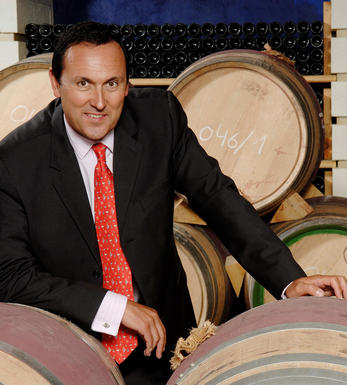
La Rioja Alta
La Rioja Alta continues to be one of the benchmarks for traditionally produced Rioja wine. Established in 1890 at the same spot where their head office sits today, their three Reserva Wine brands, Alberdi, Arana and Ardanza are named after the founding families, all three of which remain shareholders. The company still maintains traditional Rioja winemaking practices whilst embracing many of the new technological advances.
It is unusual for a great bodega of Rioja to own vineyards, but La Rioja Alta own 360ha from which they can source top-quality grapes, resulting in excellent fruit and richness throughout their wines. Tempranillo dominates the plantings, complemented with a small proportion of Garnacha and Graciano vines.
The company is renowned for the quality of its Reservas and in particular for its Gran Reservas, the 904 and the 890. The latter are produced only in exceptional years, are amongst the finest wines being produced in Rioja today.
Gran Reserva 890 is named, rather confusingly, after the date of the creation of La Rioja Alta (1890). It is the non-plus-ultra of the family, a wine that slumbers patiently for 6 years in oak, then is allowed to rest in bottle for a few more years before its released to the suspecting market-place.
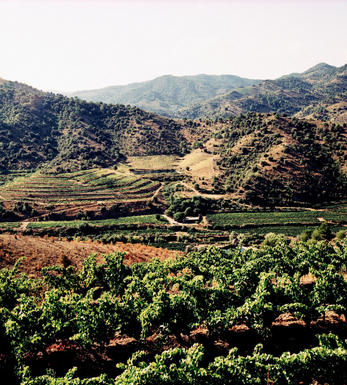
Rioja
Rioja is known primarily for its reds although it also makes white wines from the Viura and Malvasia grapes and rosés mainly from Garnacha. Most wineries (bodegas) have their own distinct red wine formula, but are normally a combination of Tempranillo, Garnacha and sometimes Graciano. Other red varieties recently approved into the Denominación de Origen Calificada (DOCa) regulations are the little-known Maturana Tinta, Maturana Parda, and Monastel (not to be confused with Monastrell). The most important of these by far is the king of native Spanish varieties, Tempranillo, which imbues the wines with complex and concentrated fruit flavours.
The Garnacha, meanwhile, bestows its wines with warm, ripe fruit and adds an alcohol punch. Graciano is an améliorateur grape (one that is added, often in small proportions, to add a little something to the final blend) and is found mainly in Reserva and Gran Reserva wines, albeit in small quantities (two to five percent), adding freshness and aroma, and enhancing the wines' ageing potential.
Crianza wines are aged for one year in oak followed by maturation for one year in bottle before being released for sale. Reservas must undergo a minimum of three years’ ageing before release, at least one of which should be in oak casks. Finally, Gran Reservas, which are only produced in the finest vintages, must spend at least five years maturing, of which at least two must be in oak.
Geographically, Rioja is divided in to three districts: Alavesa, Alta and Baja. Rioja Alavesa lies in the northwest of the La Rioja region in the Basque province of Álava. Along with Rioja Alta, it is the heartland of the Tempranillo grape. Rioja Alta, to the north-west and south of the Ebro River in the province of La Rioja, stretches as far as the city of Logroño. Elegance and poise is the hallmark of wines made here with Rioja Alta Tempranillo. Mazuelo (Carignan) is occasionally added to wines from this area to provide tannins and colour. Rioja Baja, located to the south-east, is the hottest of the three districts and specialises in Garnacha.
Rioja has witnessed a broad stylistic evolution over the years. The classic Riojas pioneered by Murrieta and Riscal in the 19thcentury were distinguished by long oak-barrel-ageing whereas the modern style, represented by Marqués de Cáceres since 1970, showcases the fruit and freshness of Tempranillo, keeping oak ageing to the legal minimum. The post-modern school that emerged in the late 1990s from producers like Palacios Remondo and Finca Allende concentrate on making wines from old vines or specific vineyard plots to accentuate the terroir, and using larger proportions of minority varietals such as Graciano.
The alta expression wines, pioneered by Finca Allende (among others) and later taken up by almost every other producer in Rioja, represent the newest flagship category in Rioja. Alongside the traditional Gran Reservas, alta expression wines are limited production and come from low-yielding vines, often from a single vineyard, and are hand-picked. Excellent examples of this style are Artadi's Pagos Viejos and El Pison.
However, modernisation has not held back the continuation of successful traditional styles as well. Happily long-established houses such La Rioja Alta, CVNE and Marques de Vargas continue to make graceful, old style wines better than ever before.
White Rioja is typically produced by the Viura grape which must comprise at least 51 percent of the blend; the rest can be made up by other, recently-authorised varieties, namely Sauvignon Blanc, Chardonnay and Verdejo, as well as the native Maturana Blanca, Tempranillo Blanco, and Turruntés (not to be mistaken for Torrontés).
Recommended Producers:
Finca Allende, Amezola de la Mora, Artadi, CVNE, Marqués de Vargas, Palacios Remondo, La Rioja Alta, Murrieta.
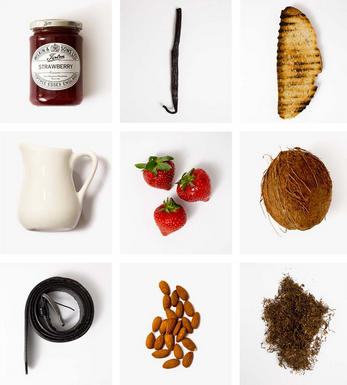
Tempranillo/Tinto Fino
A high quality red wine grape that is grown all over Spain except in the hot South - it is known as Tinto Fino in Ribera del Duero, Cencibel in La Mancha and Valdepenas and Ull de Llebre in Catalonia. Its spiritual home is in Rioja and Navarra where it constitutes around 70% of most red blends.
Tempranillo-based wines tend to have a spicy, herbal, tobacco-like character accompanied by ripe strawberry and red cherry fruits. It produces fresh, vibrantly fruit driven "jovenes" meant for drinking young. However Tempranillo really comes into its own when oak aged, as with the top Riojas where its flavours seem to harmonise perfectly with both French and American oak, producing rich, powerful and concentrated wines which can be extraordinarily long-lived.
In Ribera del Duero it generally sees less oak - the exception being Vega Sicilia where it is blended with Cabernet Sauvignon and Merlot and then aged for an astonishing 7 years in oak and is unquestionably one of the world`s greatest wines.


Buying options
Add to wishlist
Description
As always, Viña Arana delivers. Sitting alongside 890 & 904, this wine offers earlier drinking than its bigger siblings. Grippy tannins with a brilliant array of ripe red fruits and black cherry, there’s a sweet coconutty vanilla nose, with cinnamon and toasted coffee-bean notes. This wine is drinking beautifully now, though it has the quality to develop much further in the bottle for those of you who like the more earthy, meaty, mushroom undernotes that come with maturity.
Drink now to 2036
Joshua Friend, Account Manager, Berry Bros. & Rudd (March 2022)
wine at a glance
Delivery and quality guarantee